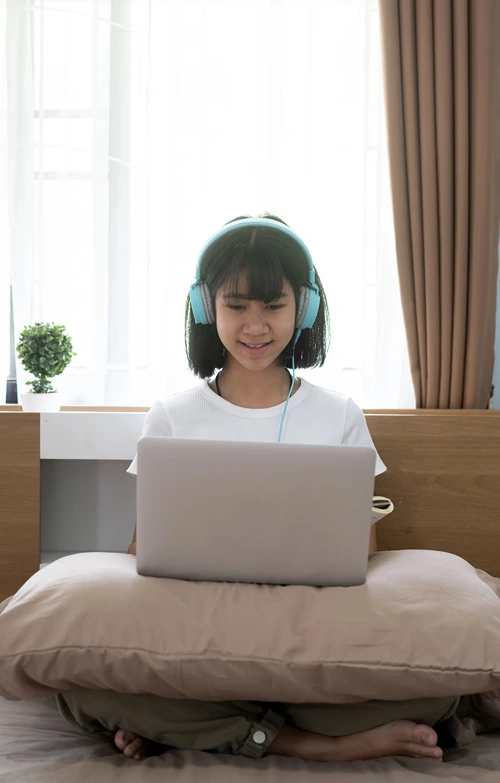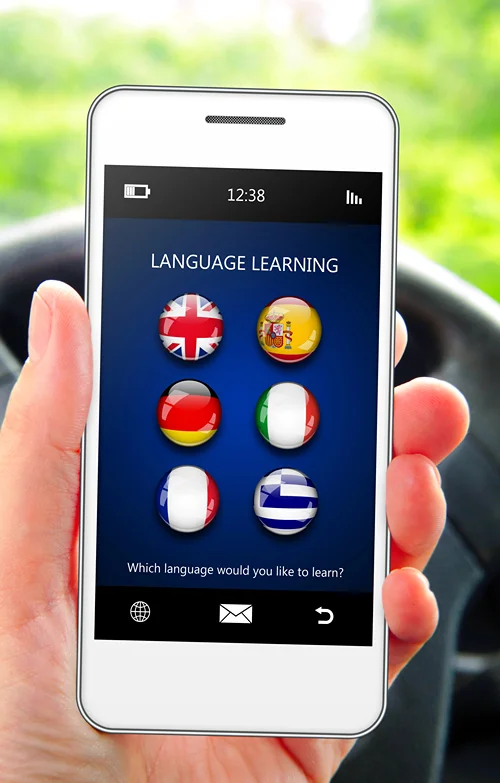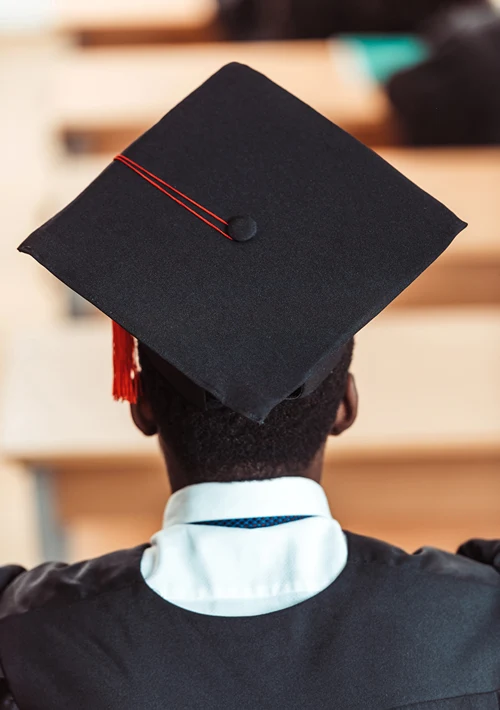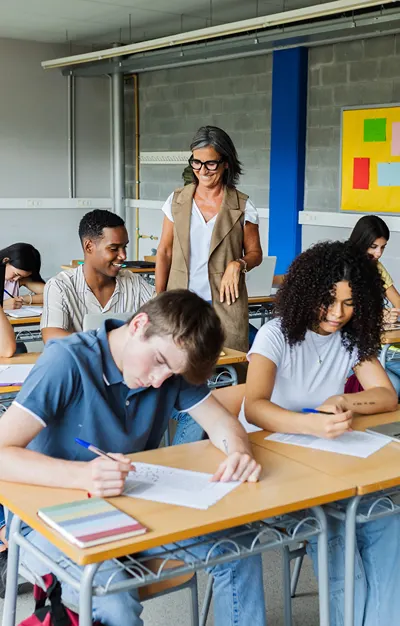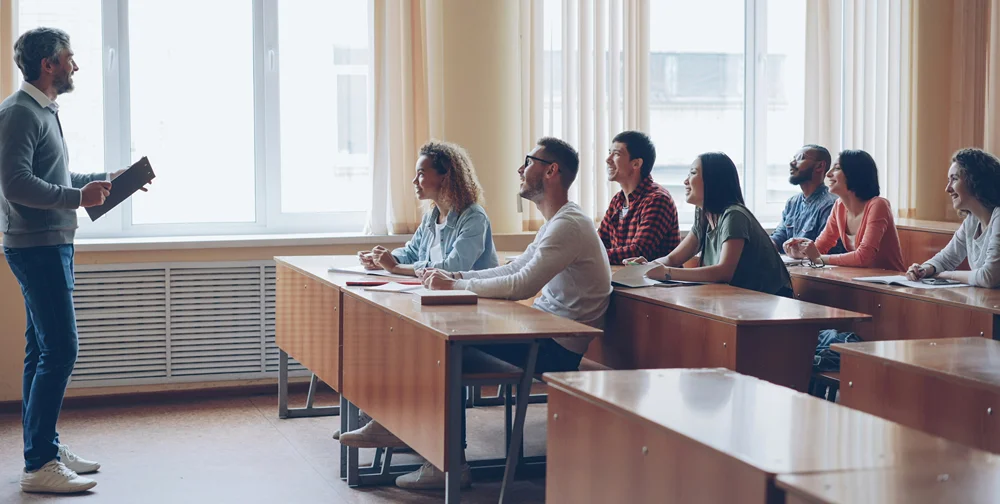Many teenagers arrive at college and quickly notice how different the expectations feel. Assignments are posted once, rarely repeated, and instructors expect students to manage readings and deadlines with little direction. That change can feel abrupt and hard to navigate, which is why some private schools begin preparing students early.
Schools such as Delphian School describe this process clearly, noting that their preparation starts in the early high school years as students work with advisors to “research and map out their academic and practical programs to help prepare them for their future.”
Families often assume a strong transcript guarantees a smooth transition, but grades don’t always reflect the habits needed to manage heavier reading loads or multi-step writing assignments. Private schools like Delphian try to address this by building routines that help students strengthen these skills over time instead of facing all the pressure at once during their first semester of college.
Teachers also talk with students about planning strategies, pacing long assignments, and seeking clarification before confusion grows. These conversations help students understand what academic independence looks like and why steady, consistent work matters before deadlines arrive.
The nonacademic adjustments can be just as challenging. Teenagers must learn how to organize their schedules, make decisions without constant guidance, and balance commitments on their own. Private schools often introduce these expectations gradually so students can practice independence in an environment where adults are still available to offer support when needed.
Classroom Environments Built for Real Conversations
In many private schools, discussions play a central role in everyday instruction. Students can’t disappear into the back row because teachers expect them to participate. This structure encourages students to listen carefully, ask follow-up questions, and explain their reasoning in ways that resemble the expectations of seminar-style college courses.
Teachers often take time to pause when a comment sparks interest. A single question can turn into several minutes of group reflection if the moment calls for it. And this flexibility helps students grow more comfortable speaking up, even when they’re unsure whether their interpretation is correct.
Classes also include assignments that rely on communication. For example, students might lead short segments of a discussion, collaborate on reading notes, or analyze material in small groups. These activities help them build the confidence needed for presentations and group projects they’ll encounter in college.
Many students also become more comfortable asking teachers for help. When class conversations feel natural, it becomes easier to ask questions during or after class. This willingness to seek clarification turns into a helpful habit once students reach college and need to make use of office hours.
Academic Expectations That Don’t Get Watered Down
Coursework in private schools like Delphian often expects students to go beyond surface-level comprehension. Teachers introduce assignments that require close reading, analysis, and multiple steps of preparation. Students learn to manage these tasks by breaking them into smaller pieces, which helps them approach demanding college syllabi with less hesitation.
According to data published by the National Center for Education Statistics in its annual schools report, private schools average 14.8 students per class, as shown in the NCES 2022 data table, which allows teachers to monitor progress more closely and hold students accountable in a consistent way.
Deadlines tend to be firm, and teachers regularly expect students to submit work on time without reminders. This consistency encourages students to build systems that track assignments accurately. When students reach college, they’re less surprised by instructors who expect coursework to arrive on the due date with no follow-up.
Students also learn to speak up when something isn’t clear. Teachers encourage them to ask for details, review feedback, or check in before large assignments begin. Learning to handle questions directly helps students adapt to college courses where instructors expect students to take initiative.
By the final years of high school, students often handle a heavier workload with more confidence. They know how long assignments will take, how to adjust when multiple deadlines overlap, and how to prepare for upcoming assessments. These habits reduce the stress that comes with college’s increased demands.
Access to High-Level Courses and the Freedom to Go Deeper
Students at private schools often enroll in courses that introduce them to material similar in complexity to what they will see during their first year of college. These classes require students to engage with challenging reading and writing tasks. Students learn that it’s normal to work through complex material rather than skim through it. According to the Council for American Private Education, private secondary-school students take about 37 AP exams per 100 students, compared with 24 exams per 100 students in public schools.
Elective classes, like those at Delphian School, provide additional chances to explore unfamiliar subjects. Some schools design unique offerings that expand beyond standard course lists. These electives introduce students to specialized topics and give them practice working with material that requires curiosity and persistence.
Advanced writing assignments help students prepare for college papers. These assignments often ask for argument development, clear organization, and evidence to support claims. By the time students enter their first semester, they’ve already completed writing tasks similar to the ones they’ll soon face.
Participation remains an essential part of many advanced classes. Teachers expect students to arrive prepared to discuss readings, ask questions, and engage with different viewpoints. These habits help students adjust to the discussion-driven format common in many college courses.
Writing Programs That Build Real Stamina
Writing appears across multiple subjects in private schools, not just English. Students might write analytical paragraphs in history, reflections in science, or structured responses in electives. This variety helps them understand that writing is a tool for thinking, not just a task for one course. A report from K–12 Dive found that only 31% of U.S. high-school students write for at least 30 minutes a day, which highlights how unusual it is for writing to show up consistently across subjects.
Teachers often include a revision process in their instruction. Students receive comments, adjust their arguments, and rewrite portions of their work before submitting a final version. This process helps students grow more patient with writing and more open to improving their drafts.
Many schools set aside time for writing conferences or workshops. During these sessions, teachers talk with students about clarity, organization, and style. Students learn what strengthens their writing and where they tend to lose focus. These targeted conversations allow them to build skills that transfer directly to college assignments.
Research skills also develop gradually. Students learn how to evaluate sources, take thoughtful notes, and form arguments that rely on credible evidence. When they reach college, they already understand the structure and demands of research-based writing.
Teachers Who Double as Mentors
Students in private schools often interact with teachers over several years, creating a steady environment where growth is monitored over time. Teachers can point out patterns, suggest new strategies, or encourage students to take on challenges that suit their strengths. This long-term guidance helps students feel prepared for the expectations ahead.
Many teachers bring strong subject knowledge to the classroom. Teachers at Delphian School, for example, possess the kind of expertise that allows them to challenge students in ways that feel meaningful rather than overwhelming. When students ask deeper questions, teachers can respond with context or alternative perspectives that expand understanding.
Conversations often move past grades and touch on topics such as study habits or planning. Students learn to reflect on what works for them instead of relying on last-minute efforts. This reflection helps them later when they’re balancing multiple courses on their own.
Students also learn how to communicate in a professional manner. They practice writing emails, asking for clarification, and discussing academic concerns respectfully. These communication habits make interacting with college instructors much easier.
Support Systems That Don’t Wait for Students to Fall Behind
Private schools often make academic support a standard part of the school day. Writing centers, learning labs, and tutoring sessions give students a chance to strengthen skills before challenges escalate. Students who become comfortable with these supports tend to use similar resources in college.
Advisory programs usually help students track their responsibilities. Students might review upcoming assignments, create weekly plans, or set goals with an advisor. These small routines help them stay organized once they reach college, where reminders are rare.
Some schools monitor student progress and step in when patterns appear. If a student struggles with multiple classes, an advisor may help them adjust their workload or study approach. This proactive support helps students learn how to recognize problems early.
Students also learn that asking for help shows maturity, not weakness. Because support is built into the school structure, students see it as something that serious learners use. This mindset makes it easier for them to visit academic support centers on their college campuses.
College Counseling That Begins While Students Are Still Finding Themselves
Counselors often begin working with students earlier than many expect. They help students choose courses that build long-term skills rather than simply filling requirements. These early conversations help students make thoughtful decisions as they move through high school.
Students also explore their academic interests with the help of counselors. Discussions might focus on what subjects students enjoy, how they learn best, or what kinds of environments help them thrive. This self-awareness shapes the choices students make when selecting colleges.
Counselors provide practical preparation too. Workshops might cover reading strategies, time management, or test preparation. Students begin to understand how to handle new academic challenges before they encounter them in college.
These early steps help students see college as something they can approach with clarity. By the time they start applications, they already understand how their strengths connect to the academic environments they’re considering.
Activities and Leadership Roles That Develop Maturity
Extracurricular activities at Delphian School give students regular opportunities to take responsibility. Whether they’re rehearsing for a performance, practicing for a sport, or participating in a club, they learn how to balance commitments with their academic work.
Students who take on leadership roles practice decision-making. They may plan meetings, coordinate projects, or guide teammates. These moments teach them how to manage expectations and support people who rely on them.
Working with peers also teaches students how to collaborate. They learn that productive teamwork requires compromise, communication, and steady effort. These skills help them adjust to group assignments in college.
Activity schedules also teach students how to manage time. Students quickly learn that staying organized is necessary when academic work intersects with rehearsals, practices, or meetings. This experience helps them handle the varied schedules of college life.
Opportunities for Real-World Learning, Not Just Classroom Rigor
Delphian School offers learning experiences outside the classroom. Students might participate in local projects, internship programs, or interdisciplinary courses. These activities teach them how to apply classroom concepts in practical ways.
Real-world learning also helps students adapt to unfamiliar situations. When they encounter new environments, they practice asking questions, making observations, and adjusting their approach. These skills carry into their college experiences, where new material appears constantly.
Long-term projects such as capstones encourage students to develop work steadily over several months. They learn how to pace themselves, seek feedback, and revise their work as they go. These habits resemble the expectations of college-level assignments.
Interdisciplinary courses help students combine ideas from different subjects. When they approach topics from multiple angles, they become more flexible thinkers. This flexibility becomes valuable in college settings where courses often blend methods and themes.
Closing Perspective
Private schools design their programs to help students adjust to the demands of college. Academic habits grow gradually through long-term assignments, consistent expectations, and meaningful feedback. Students learn that managing their time, participating thoughtfully, and asking for clarification are essential parts of academic life.
These experiences give students a sense of stability when they start college. They recognize how to approach their classes, how to communicate with instructors, and how to stay organized when workloads shift. Those habits make the transition smoother and help students approach new challenges with more confidence.

